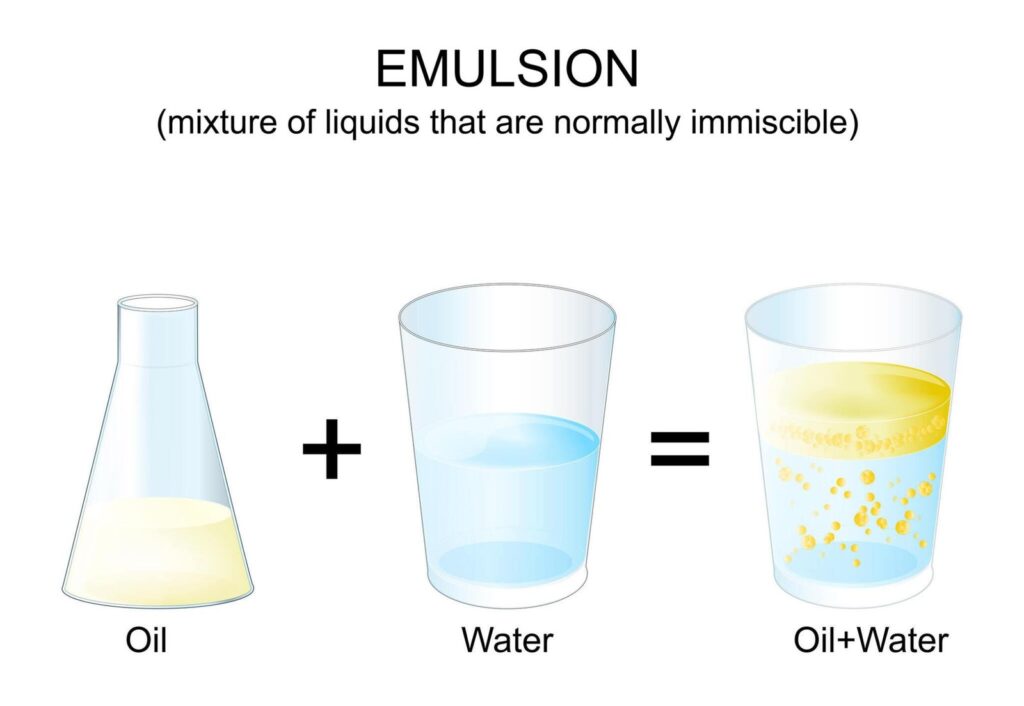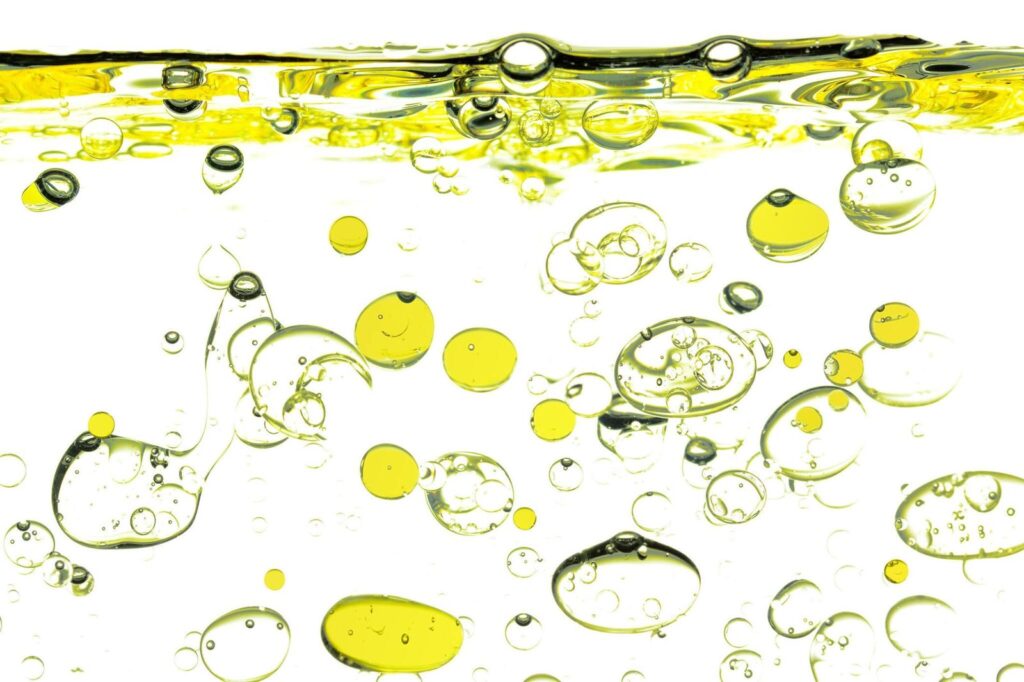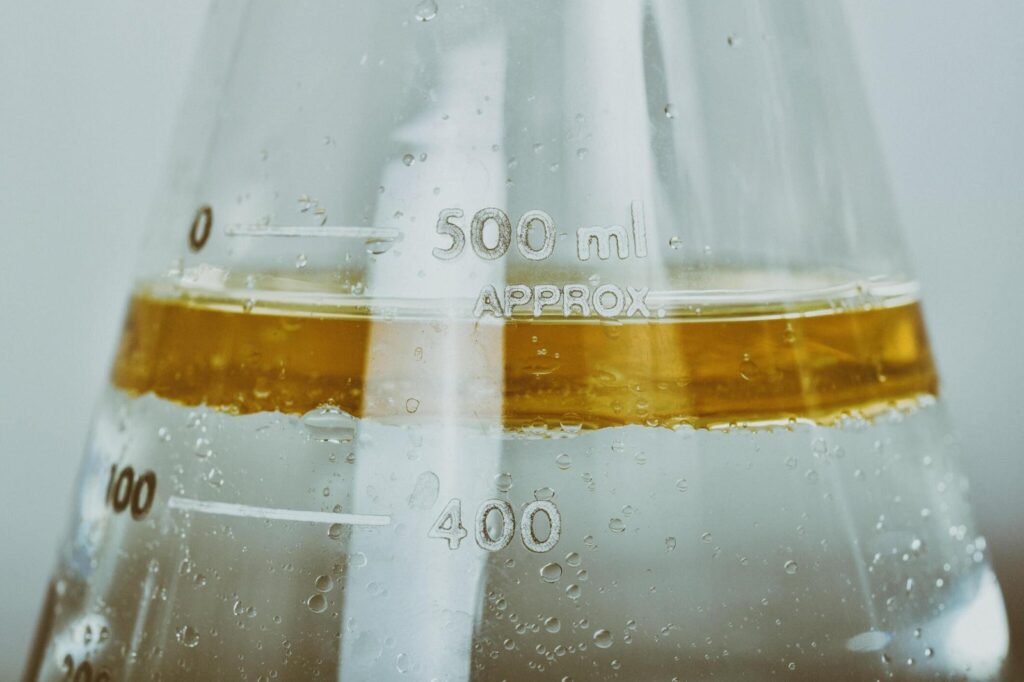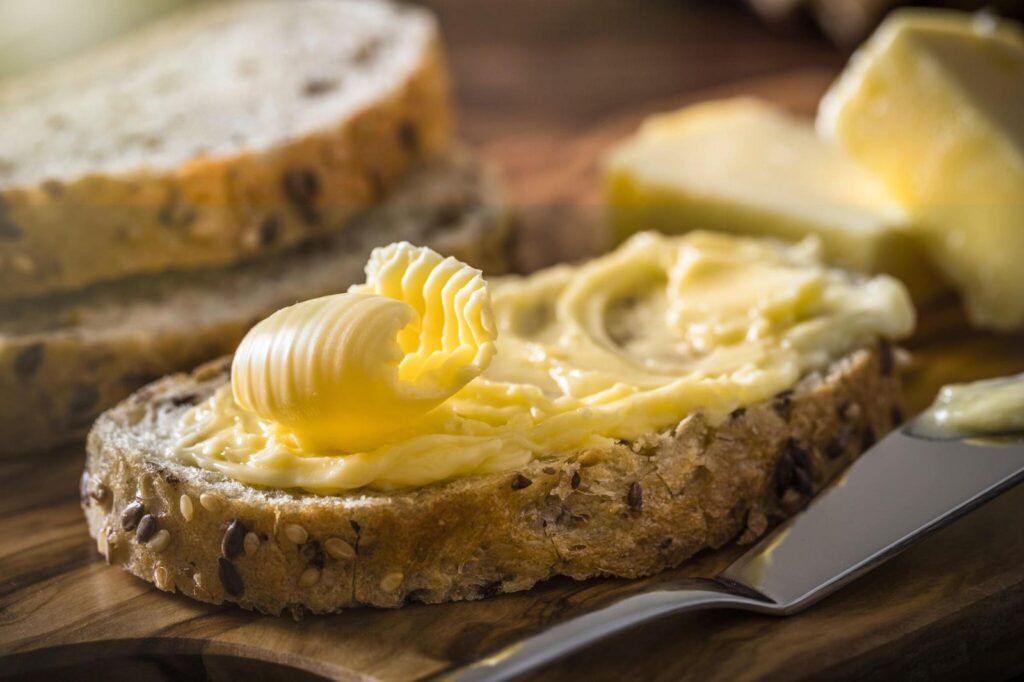Have you ever pondered over the mechanisms that ensure the uniform consistency of your preferred salad dressing or the factors behind the creamy texture retained by ice cream? The answer lies in the science of food emulsions.
An emulsion is a mixture of two or more immiscible substances, such as oil and water that an emulsifying agent holds together. In the food industry, emulsions play a crucial role in creating many products’ desired texture, appearance, and stability.
In this article, we will delve into the science behind food emulsions, the different types of emulsions, and their applications in the food industry.
1. What is an Emulsion?

An emulsion is a mixture of two or more immiscible substances, such as oil and water that an emulsifying agent holds together. The emulsifying agent stabilizes, preventing the substances from separating and creating a stable mixture.
1.1 Emulsion Definition
In an emulsion, one substance disperses in the other as small droplets, creating a mixture of two or more immiscible substances. The dispersed substance is the internal or dispersed phase, while the continuous substance is the external or continuous phase.
In food emulsions, the dispersed phase is typically oil, while the continuous phase is water. However, there are reverse emulsions, where water is the dispersed phase, and oil is the continuous phase.
2. Types of Emulsion
Two main types of emulsions exist Water in Oil (W/O) and Oil in Water (O/W). The emulsion type is determined by the ratio of the dispersed phase to the continuous phase.
2.1 Water in Oil Emulsion

In a water-in-oil emulsion, water is the dispersed phase, and oil is the continuous phase. This emulsion type is commonly used in butter, margarine, and mayonnaise products.
The continuous fat phase holds together the dispersed water droplets in butter, creating a smooth and spreadable texture. In mayonnaise, the continuous water phase disperses the oil droplets, creating a creamy and stable emulsion.
2.2 Oil in Water Emulsion

In an oil-in-water emulsion, oil is the dispersed phase, and water is the continuous phase. This emulsion type is commonly used in milk, cream, and salad dressings.
The continuous water phase holds together the dispersed fat droplets in milk, creating a homogeneous and creamy texture. In salad dressings, a smooth and pourable emulsion forms as the oil droplets disperse in the continuous water phase.
3. The Role of Emulsifiers
Emulsifiers are essential in creating and stabilizing food emulsions. They are molecules with both hydrophilic (water-loving) and hydrophobic (water-repelling) properties, allowing them to interact with the oil and water phases.
3.1 How Emulsifiers Work
Emulsifiers work by reducing the surface tension between the oil and water phases, allowing them to mix and form a stable emulsion. They do this by forming a layer around the dispersed droplets, preventing them from coalescing and separating.
Emulsifiers also help reduce the dispersed droplets’ size, creating a smoother and more stable emulsion. It is important to create a desirable texture and appearance in food products.
4. Applications of Emulsion in the Food Industry
Emulsions play a crucial role in the food industry, with various product applications. Some common examples include:
4.1 Dairy Products

Dairy products such as milk, cream, and butter are all emulsions. In milk, the fat droplets are dispersed in the continuous water phase, creating a homogenous and creamy texture. On the other hand, in cream, the continuous water phase holds the fat droplets together, creating a thick and spreadable texture. Finally, in butter, the water droplets are dispersed in the continuous fat phase, creating a smooth and spreadable texture.
4.2 Salad Dressings
Salad dressings are a classic example of an oil-in-water emulsion. Emulsifiers such as lecithin and xanthan gum commonly stabilize the emulsion in salad dressings to prevent separation, dispersing the oil droplets in the continuous water phase and creating a smooth and pourable texture.
4.3 Ice Cream
Ice cream is a complex emulsion with water and fat droplets dispersed in a continuous phase of sugar and air. Emulsifiers such as mono and diglycerides stabilize the emulsion and create a smooth and creamy texture.
4.4 Baked Goods

Bakers commonly use emulsifiers in baked goods such as cakes, cookies, and bread to improve texture, volume, and shelf life. They help to create a more uniform and stable batter or dough, resulting in a better final product.
5. Challenges in Emulsion Stability
While emulsifiers play a crucial role in creating and stabilizing food emulsions, there are still challenges in maintaining their stability. Some common factors that can affect emulsion stability include:
5.1 Temperature
Temperature plays a significant role in emulsion stability. As temperature increases, the viscosity of the continuous phase decreases, making it easier for the dispersed droplets to merge and separate. Many emulsions, such as mayonnaise, must be refrigerated to maintain stability.
5.2 pH
The pH of the emulsion can also affect its stability. Changes in pH can cause the emulsifier to lose its ability to stabilize the emulsion, resulting in separation.
5.3 Shear
Shear refers to the force applied to an emulsion, such as mixing or blending. High shear can cause the dispersed droplets to coalesce and separate, resulting in a broken emulsion.
6. Advantages of emulsion in food
Emulsions are a type of mixture that combines two or more immiscible substances, such as oil and water, into a stable and uniform solution. Emulsions are crucial in creating various products in the food industry, from salad dressings to ice cream. In this article, we will explore the advantages of using emulsions in food and provide some examples of emulsions commonly found in our daily diet.
6.1 Improved Texture and Mouthfeel

One of the main advantages of using emulsions in food is the improved texture and mouthfeel it provides. Emulsions can create a smooth and creamy texture, making food products more appealing to consumers. For example, mayonnaise is a water-in-oil emulsion with a rich and creamy texture, making it a popular condiment for sandwiches and salads.
6.2 Enhanced Flavour
Emulsions can also enhance the flavor of food products. By combining two or more ingredients, emulsions can create a more complex and well-rounded flavor profile. For instance, vinaigrettes, combining oil, vinegar, and other seasonings, create a flavorful, tangy dressing, making them a popular emulsion used in salad dressings.
6.3 Increased Shelf Life

Another advantage of using emulsions in food is its increased shelf life. Emulsions can act as a natural preservative, preventing the separation of ingredients and extending the shelf life of products. For example, mayonnaise has a longer shelf life than other condiments because of its emulsion properties.
6.4 Flexibility in Cooking
Emulsions are incredibly versatile in cooking, allowing various applications in the food industry. These ingredients have versatile applications and are suitable for producing sauces, dressings, spreads, and confectioneries. For example, butter is a water-in-oil emulsion that is used in baking to create flaky and tender pastries.
7. Examples in Food

- Salad dressings: Including vinaigrettes, ranch dressing, and Caesar dressing, showcase various emulsions used to prepare salads.
- Mayonnaise: As mentioned earlier, mayonnaise is a popular emulsion used as a condiment.
- Ice cream: Ice cream is a water-in-oil emulsion, with the water being the ice crystals and the oil being the milk fat.
- Hollandaise Sauce: A Traditional French Culinary Preparation Constituted by an Emulsion of Butter, Egg Yolks, and Lemon Juice.
- Whipped cream: In whipped cream, the cream acts as the water-in-oil emulsion, with air bubbles created during whipping serving as the oil.
8. Where to Buy?
Unifer offers top-quality natural emulsifying agents derived from psyllium, citrus, and potato fibers, enhancing the creaminess and smooth mouthfeel of the end product, which is widely favored by consumers. Moreover, it replaces artificial emulsifiers like E-numbers, establishing itself as a natural option highly favored by food manufacturers. Additionally, it boasts benefits such as being gluten-free, having a high shelf life, containing high dietary fiber, providing an excellent binding system, and possessing moisture migration ability, among others.
Click here to purchase the finest natural emulsifier from Unifer.
9. Conclusion
In conclusion, emulsions play a crucial role in the food industry, providing a variety of advantages such as improved texture, enhanced flavor, increased shelf life, and flexibility in cooking. From salad dressings to ice cream, emulsions can be found in many of our favorite food products. Next time you enjoy a creamy dressing or a scoop of ice cream, remember emulsions’ role in creating these delicious treats.
The food industry plays a crucial role in promoting sustainability. To ensure meeting the food needs of future generations, it’s essential to stay updated on food-related news and articles promoting healthy diets.
Click here to discover the latest developments in Food News, and click here to access valuable information on maintaining a Healthy Diet.

